Is the cosmic distance ladder flawed?
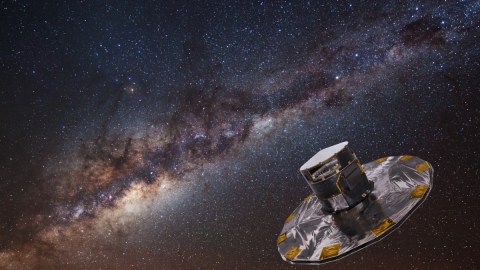
GAIA Satellite To Find Out If We’re Wrong About Dark Energy And The Expanding Universe
“We can only see a short distance ahead, but we can see plenty there that needs to be done.” –Alan Turing
How far away are the most distant objects in the Universe? How has the Universe expanded over the course of its history? And therefore, how big and how old is the Universe since the Big Bang? Through a number of ingenious developments, humanity has come up with two separate ways to answer these questions:
- To look at the minuscule fluctuations on all scales in the leftover glow from the Big Bang — the Cosmic Microwave Background — and to reconstruct the Universe’s composition and expansion history from that.
- To measure the distances to the stars, the nearby galaxies, and the more distant galaxies individually, and reconstruct the Universe’s expansion rate and history from this progressive “cosmic distance ladder.”
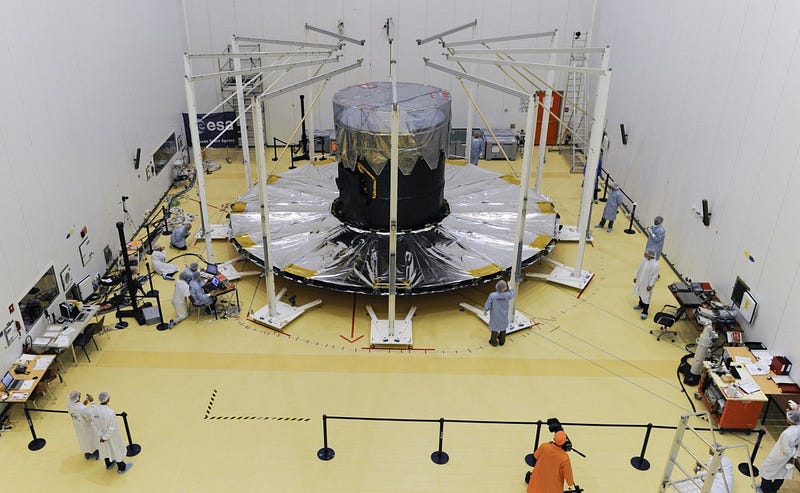
Interestingly enough, these two methods disagree by a significant amount, and the European Space Agency’s GAIA satellite, which held its first data release on September 14th, intends to resolve it one way or another.
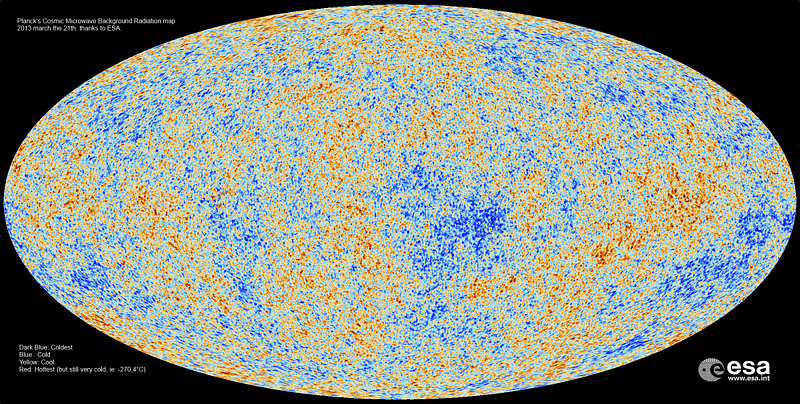
The leftover glow from the Big Bang is only one data set, but it’s perhaps the most powerful data set we could have asked for nature to provide us with. It tells us the Universe expands with a Hubble constant of 67 km/s/Mpc, meaning that for every Megaparsec (about 3.26 million light years) a galaxy is apart from another, the expanding Universe pushes them apart at 67 km/s. The Cosmic Microwave Background also tells us how the Universe has expanded over its history, giving us a Universe that’s 68% dark energy, 32% dark-and-normal matter combined, and with an age of 13.81 billion years. Beginning with COBE and heavily refined later by BOOMERanG, WMAP and now Planck, this is perhaps the best data humanity has ever obtained for precision cosmology.
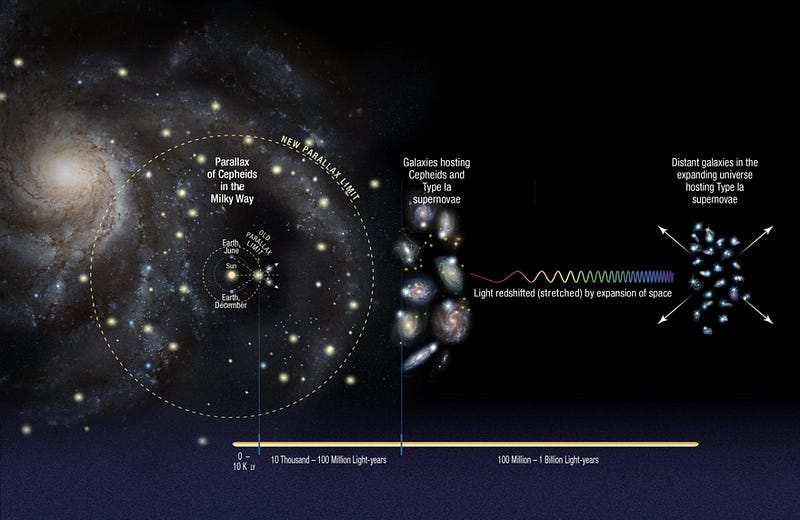
But there’s another way to measure how the Universe has expanded over its history: by constructing a cosmic distance ladder. One cannot simply look at a distant galaxy and know how far away it is from us; it took hundreds of years of astronomy just to learn that the sky’s great spirals and ellipticals weren’t even contained within the Milky Way! It took a tremendous series of steps to figure out how to measure astronomical distances accurately:
- We needed to learn how to measure Solar System distances, which took the developments of Newton and Kepler, plus the invention of the telescope.
- We needed to learn how to measure the distances to the stars, which relied on a geometric technique known as parallax, as a function of Earth’s motion in its orbit.
- We needed to learn how to classify stars and use properties that we could measure from those parallax stars in other galaxies, thereby learning our first galactic distances.
- And finally, we needed to identify other galactic properties that were measurable, such as surface brightness fluctuations, rotation speeds or supernovae within them, to measure the distances to the farthest galaxies.
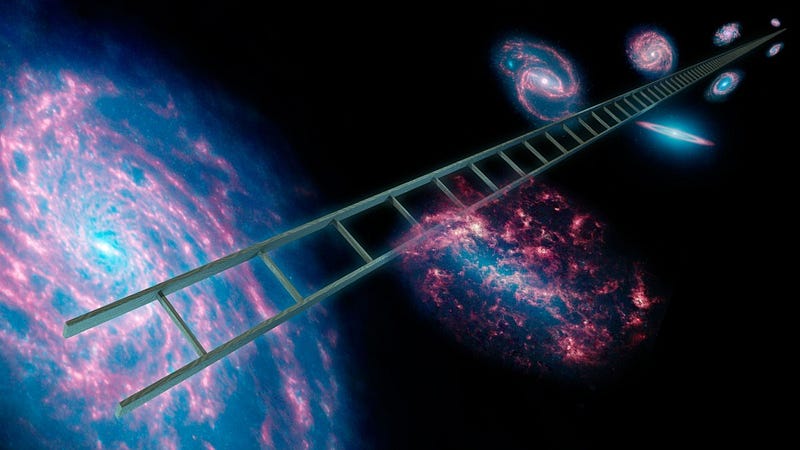
This latter method is older, more straightforward and requires far fewer assumptions. But it also disagrees with the Cosmic Microwave Background method, and has for a long time. In particular, the expansion rate looks to be about 10% faster: 74 km/s/Mpc instead of 67, meaning — if the distance ladder method is right — that the Universe is either younger and smaller than we thought, or that the amount of dark energy is different from what the other method indicates. There’s a big uncertainty there, however, and the largest component comes in the parallax measurement of the stars nearest to Earth.
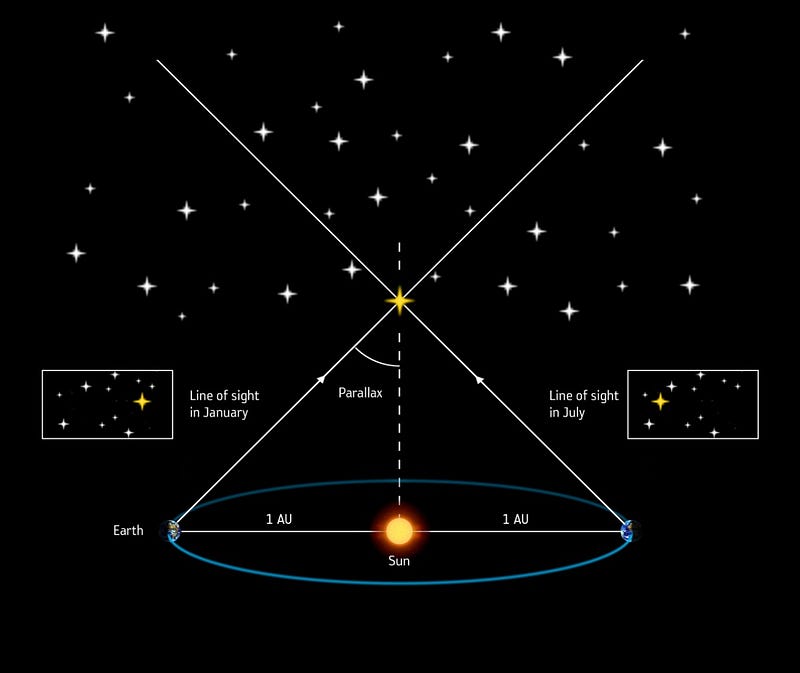
This is where the GAIA satellite comes into play. Outstripping all previous efforts, GAIA will measure the brightnesses and positions of over one billion stars in the Milky Way, the largest survey ever undertaken of our own galaxy. It expects to do parallax measurements for millions of these to an accuracy of 20 micro-arc-seconds (µas), and for hundreds of millions more to an accuracy of 200 µas. All of the stars visible with the naked eye will do even better, with as little as 7 µas precision for everything visible to a human through a pair of binoculars.
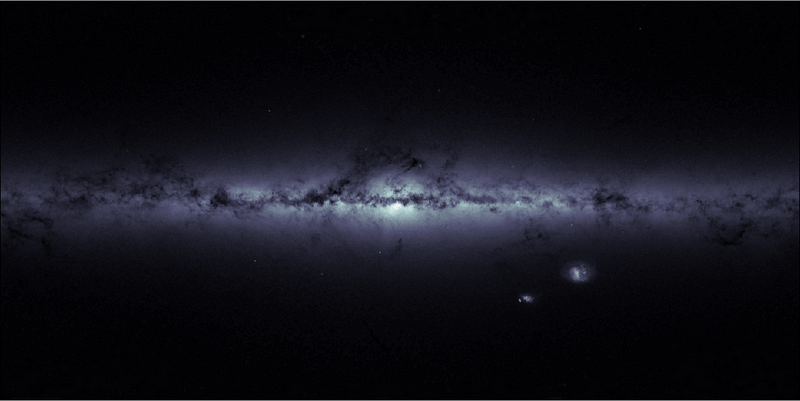
GAIA was launched in 2013 and has been operational for nearly two full years at this point, meaning it’s collected data on all of these stars at many different points in our planet’s orbit around the Sun. Obtaining parallax measurements means we can get the full three-dimensional positions of these stars in space, and can even infer their proper motions at these accuracies, meaning we can dramatically reduce the uncertainties in the distances to the stars. What’s most spectacular is that many of these stars will be of the same types that we can measure in other star clusters and galaxies, enabling us to build a better, more robust cosmic distance ladder. When the GAIA results come out — and have been fully analyzed by the astronomical community — we’ll have our best-ever understanding of the Universe’s expansion history and of the distances to the farthest galaxies in the Universe, all because we measured what’s happening right here at home.
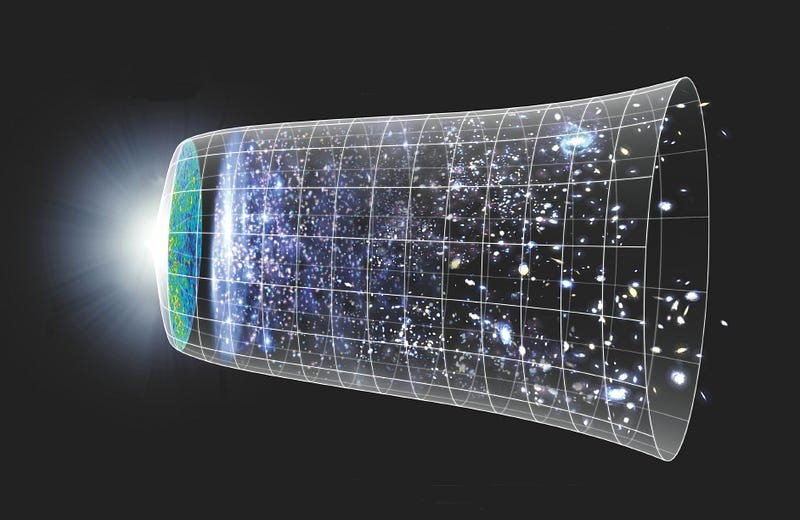
Right now, the Cosmic Microwave Background and the cosmic distance ladder are giving us two different answers to the question of the age, expansion rate and composition of our Universe. They’re not verydifferent, but the fact that they disagree points to one of two possible things. Either one (or both) of the measurements are in error, or there’s a fundamental tension between these two types of measurement that might mean our Universe is a funnier place than we’ve realized to date. When the results from GAIA come out tomorrow, the great hope of most astronomers is that the previous parallax measurements will be shown to have been in error, and our best understanding of the Universe will hold up and be vindicated. But nature has surprised us before, and — if you’re hoping for something new — keep in mind that it just might do so again.
This post first appeared at Forbes, and is brought to you ad-free by our Patreon supporters. Comment on our forum, & buy our first book: Beyond The Galaxy!





